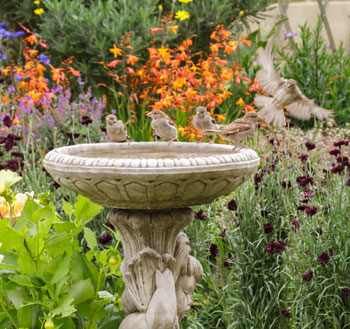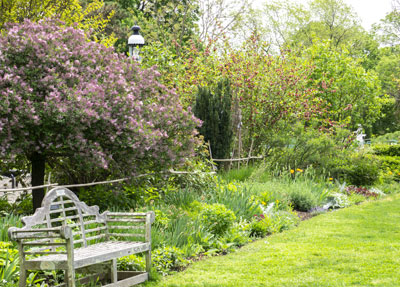4 Tips for More Backyard Birds in Arkansas
If you’ve ever put out birdseed and then sat back to watch birds flock to the feeder, only to be disappointed when none showed, take heart; attracting birds to your yard usually takes more than simply putting out seed in a feeder. Birds hang out in areas that fulfill their basic needs: food, shelter, and water. Try the following tips to make feathered creatures your friends.
1) Know their favorite foods.
Attracting birds to your yard is easier when you know their favorite snacks. For Arkansas backyard birdwatchers, here are a few common types:
- American Goldfinches – These bright beauties flock to feeders with thistle (nyjer) seed.
- Purple Martins – Attracted by insects, these birds are especially drawn to areas with nearby water, where bugs are plentiful.
- Blue Jays – These adaptable birds are enthusiastic about peanuts, sunflower seeds, and even suet.
- Northern Cardinals – Cardinals love black oil sunflower seeds, which offer the right mix of fat and protein.
- Mourning Doves – Known for ground-feeding, they prefer millet, cracked corn, and black oil sunflower seeds.
- Woodpeckers – Suet feeders can attract Downy and Red-bellied Woodpeckers, both common in Arkansas.
If you're looking for a particular bird, do a little research and choose foods specific to their tastes. Offering a variety of seeds and suet can increase the chances of attracting a diverse range of feathered visitors to your backyard.
Visit our feeding backyard songbirds webpage for more info.
2) Provide water.
 Birds rely on a consistent water source for both drinking and bathing, especially
in hot Arkansas summers. A simple birdbath is a great start, and it doesn’t need to
be fancy—just keep it clean and filled.
Birds rely on a consistent water source for both drinking and bathing, especially
in hot Arkansas summers. A simple birdbath is a great start, and it doesn’t need to
be fancy—just keep it clean and filled.
Adding a small fountain or dripper to your birdbath can create gentle splashes that attract even more birds, as they’re drawn to the sound and motion of moving water.
In winter, birds struggle to find fresh water. Consider adding a heated birdbath or birdbath heater to ensure they have access year-round. By offering a safe, reliable water source, you’re giving local birds essential hydration and hygiene that could make a difference in their survival.
Taking this small step empowers you to create a backyard refuge for birds—no matter the season. Every bit helps, and your efforts will be rewarded with more vibrant bird activity in your yard!
3) Be consistent.
Once you start feeding birds, keep your feeders stocked. Birds rely on steady food sources, especially overwintering species that need extra energy when food is scarce. Setting up feeders in the fall is key, as it helps attract these birds early and gives them time to settle in for winter.
To stay consistent, consider buying seed in bulk and establishing a regular refill schedule. Reliable food supplies help birds build a routine, and your yard becomes a trusted stop for their seasonal needs.
4) Provide shelter.
 Birdhouses are nice additions to the yard and will attract a family of birds. But
to attract larger numbers of birds, plant trees and large, bushy shrubs. Especially
good are trees and shrubs with small fruits, such as mulberries, which birds love
to eat.
Birdhouses are nice additions to the yard and will attract a family of birds. But
to attract larger numbers of birds, plant trees and large, bushy shrubs. Especially
good are trees and shrubs with small fruits, such as mulberries, which birds love
to eat.
Mother Nature is smarter than any gardener. A community of native plants provides habitat for a variety of native wildlife species such as birds and butterflies.
Plant lots of perennials, shrubs, trees, groundcovers, and edible plants, and you’ll create a complex ecosystem right in your yard. The plants will attract insects, which will feed the birds, which will control the insects, which will protect the plants, which will also provide food for the birds.
By: Sherri Sanders
County Extension Agent - Agriculture
ssanders@uada.edu